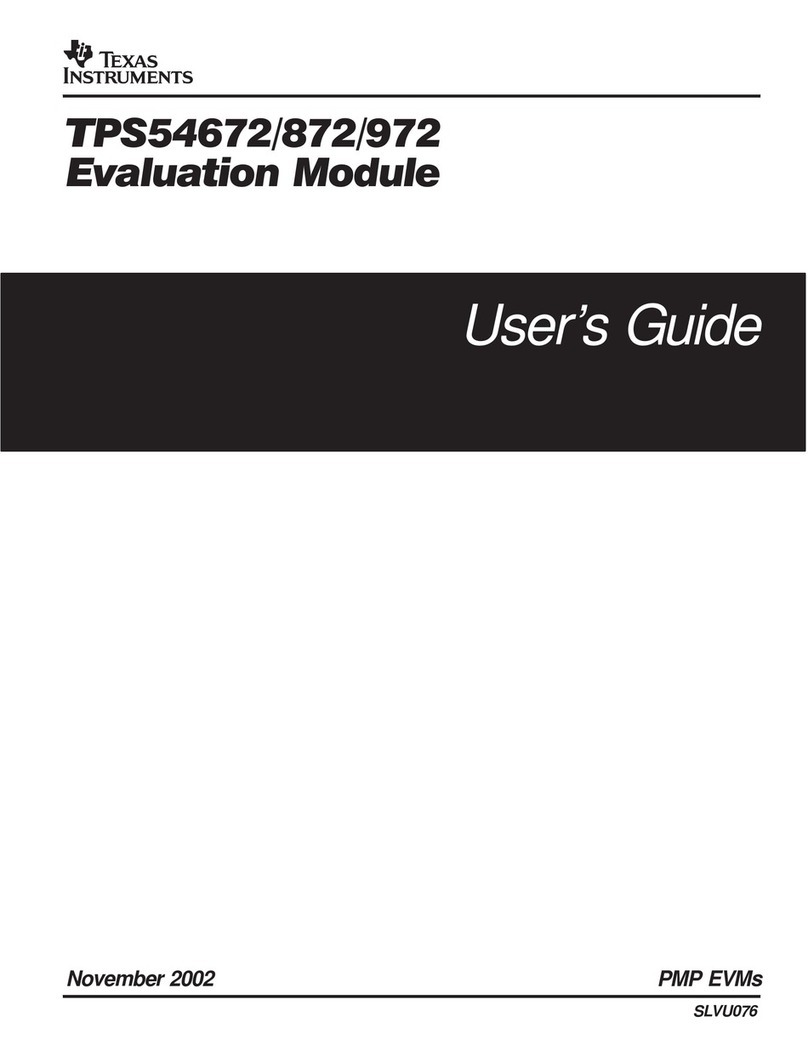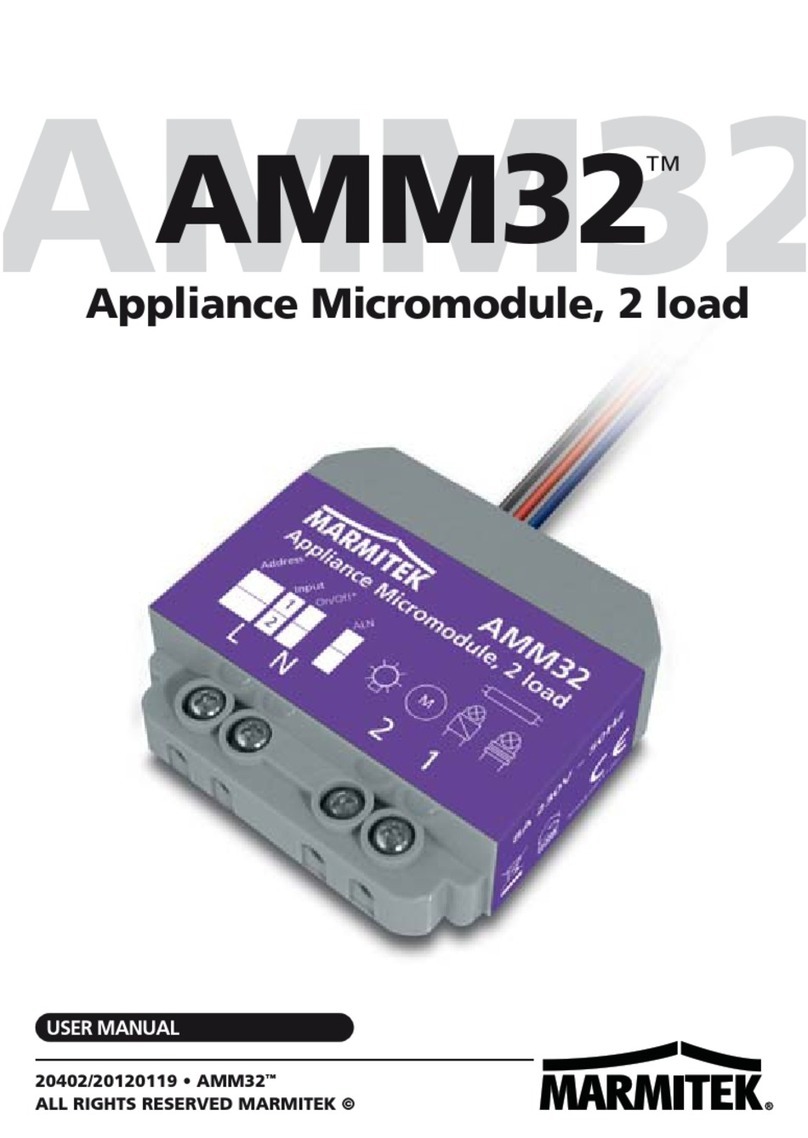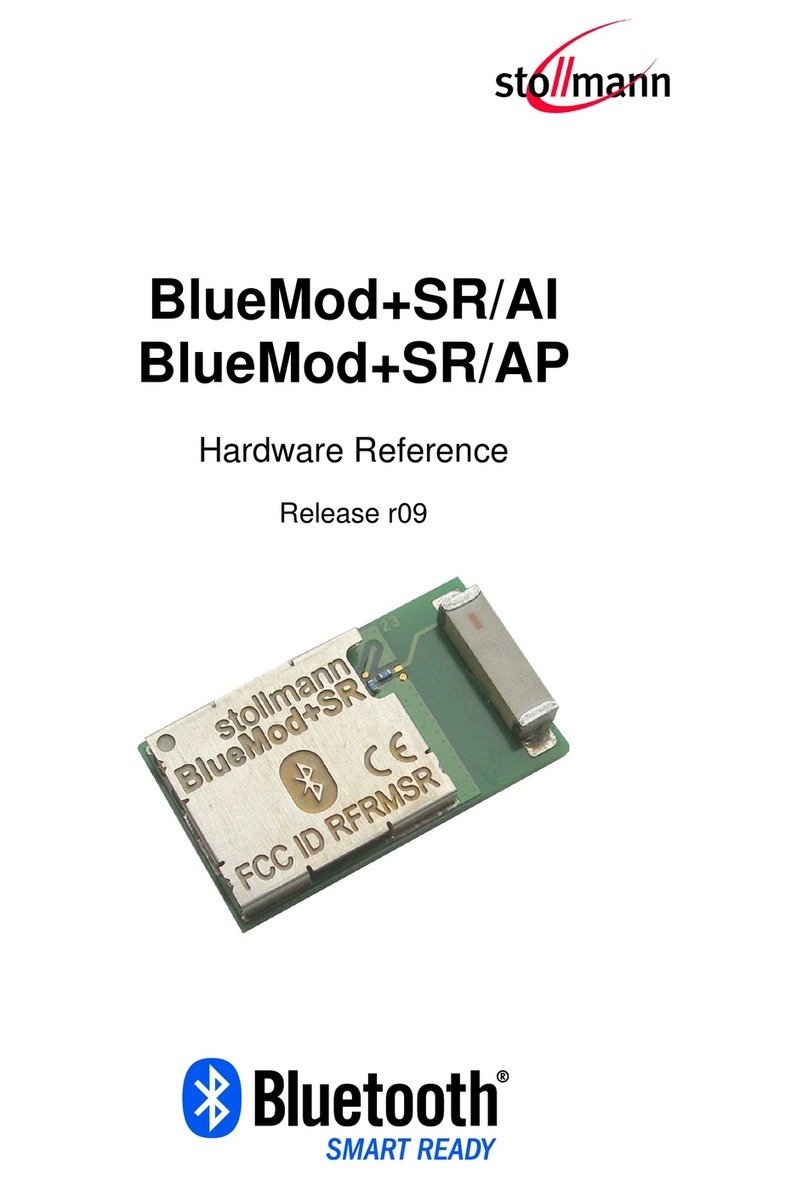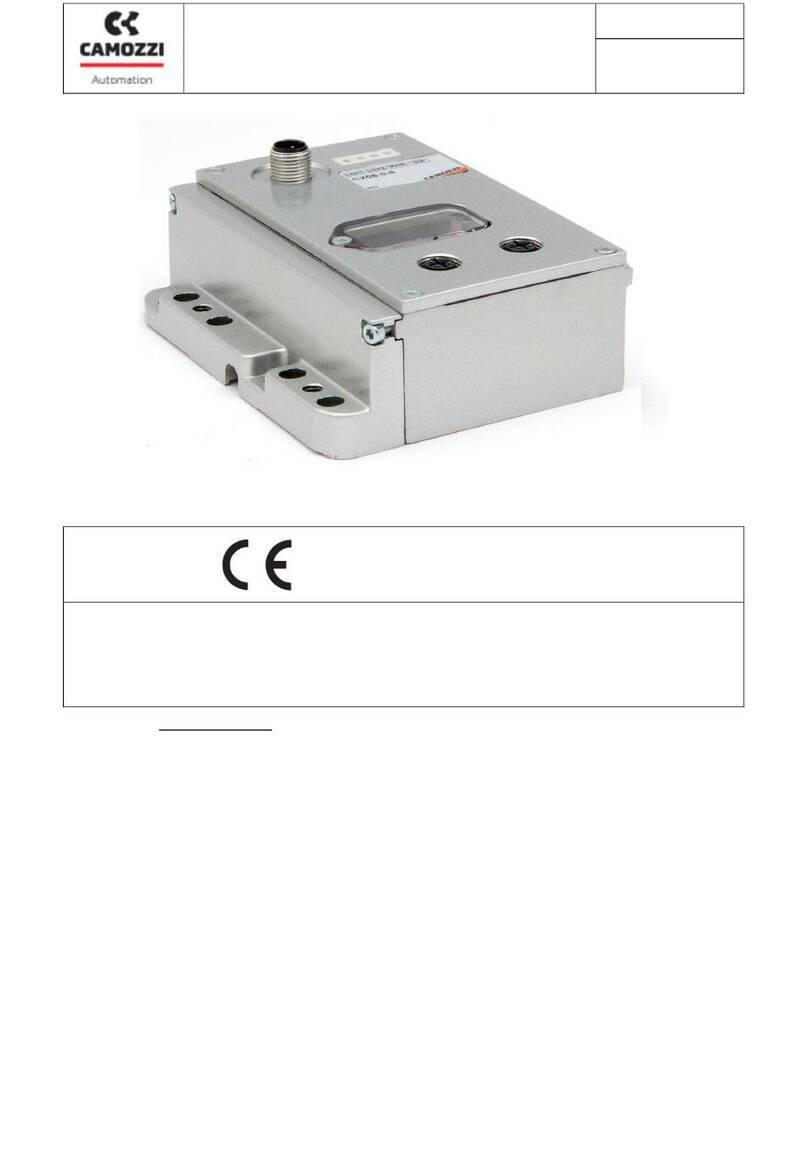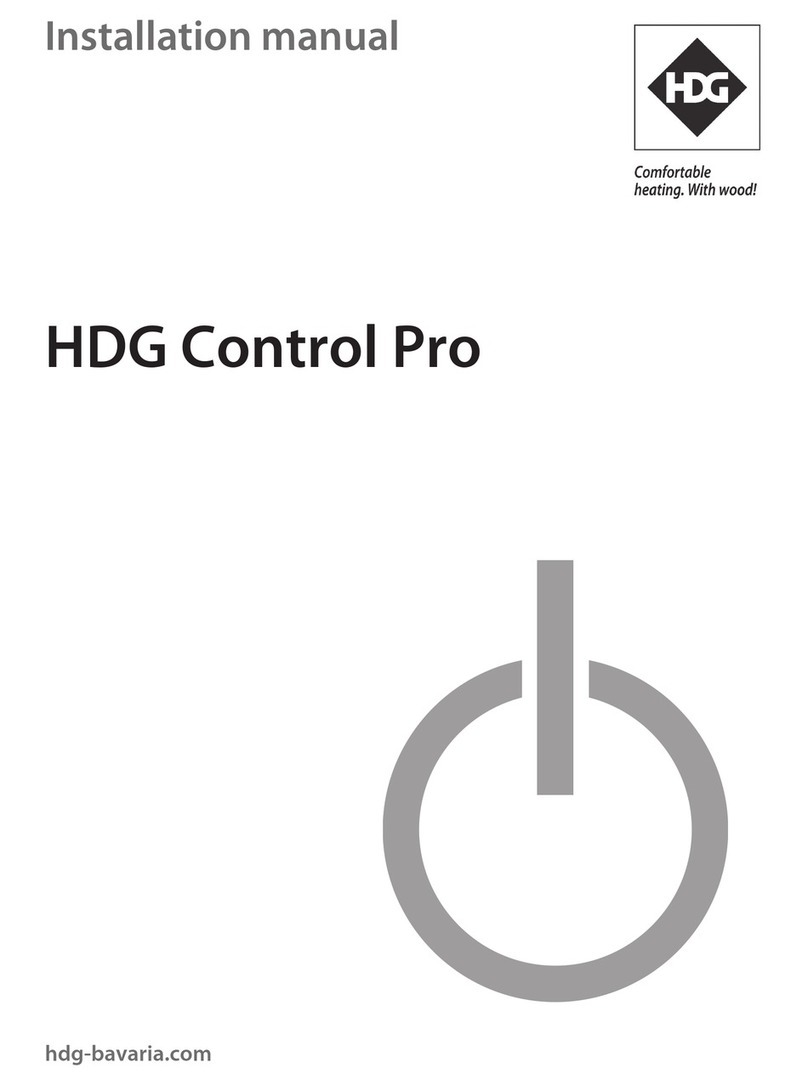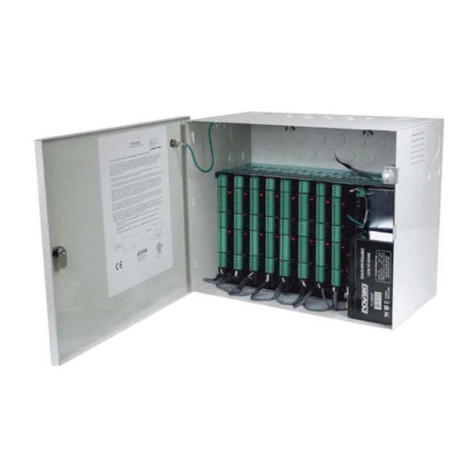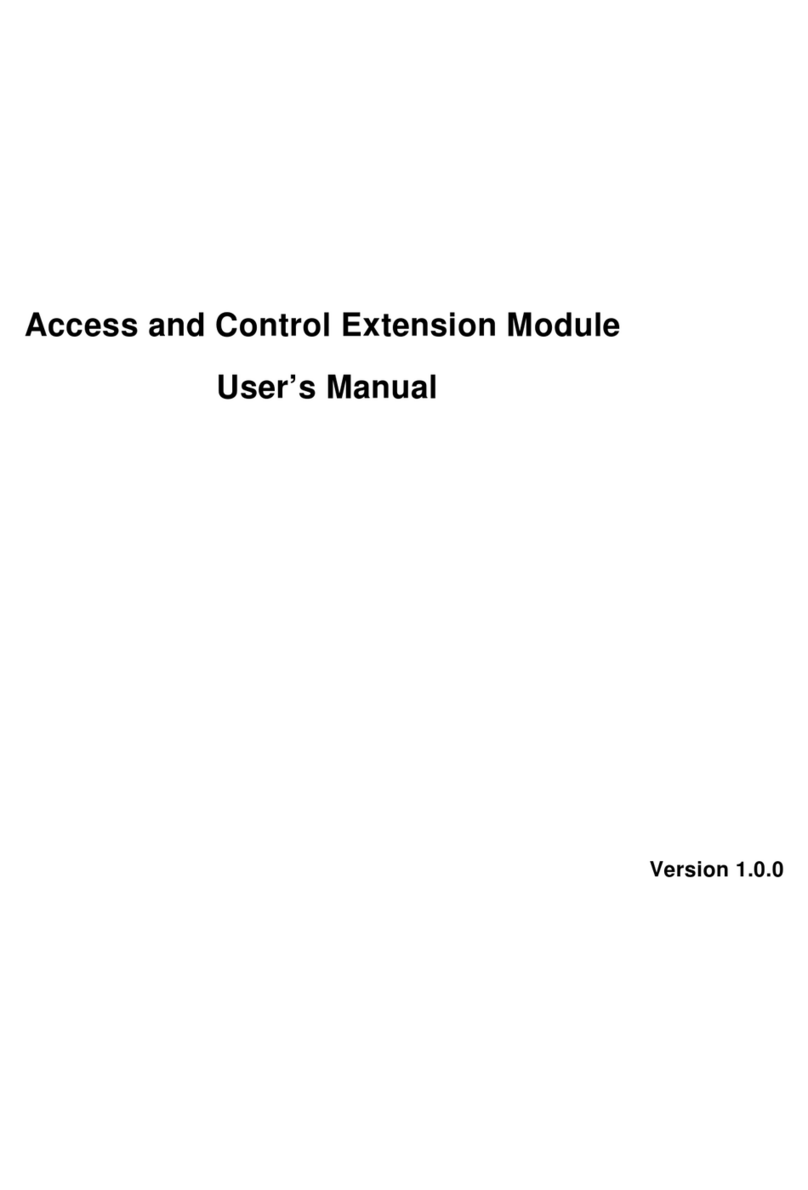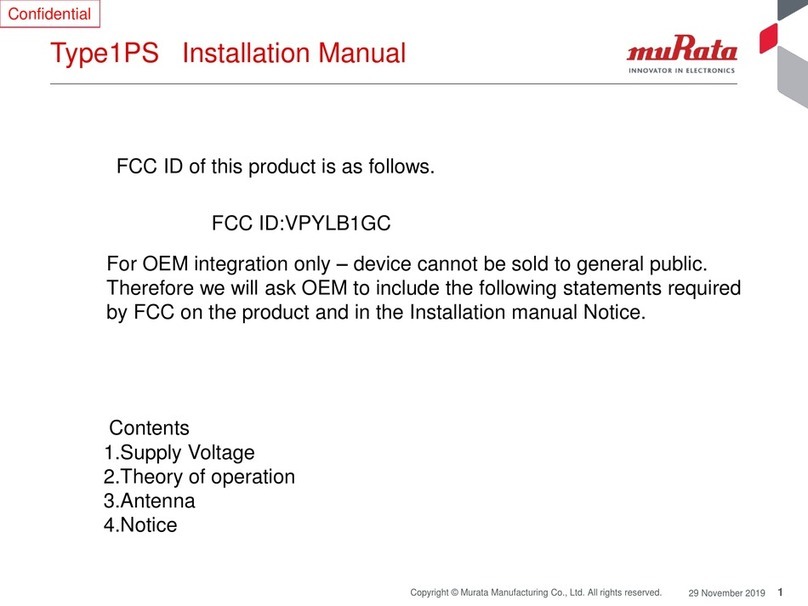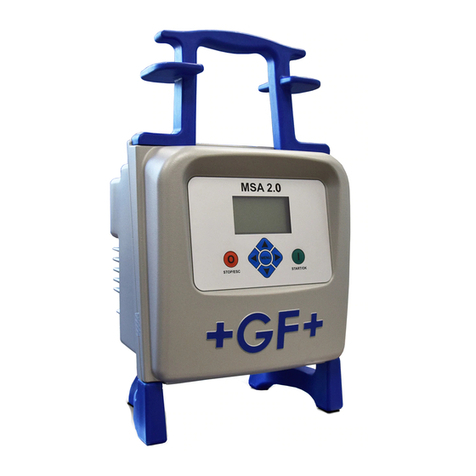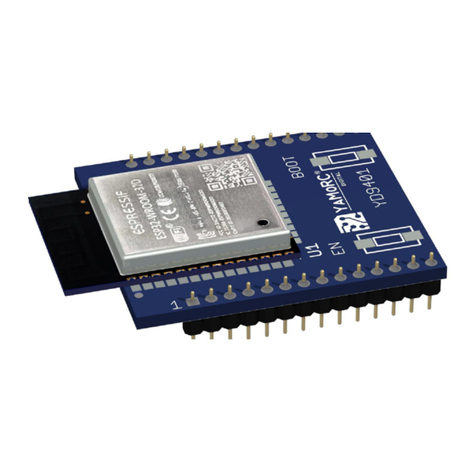MICROENER MX14-5 User manual

MX14-5
Doc. N° MO-0141-ING
Copyright 2010
Data
18.10.2007
Rev.
3
Pag.
1
of
19
PROGRAMMABLE INTERFACE
and
CONTROL MODULE
TYPE
MX14-5
OPERATION MANUAL

MX14-5
Doc. N° MO-0141-ING
Copyright 2010
Data
18.10.2007
Rev.
3
Pag.
2
of
19
INDEX
1. GENERAL UTILIZATION AND COMMISSIONING DIRECTIONS ____________________________________3
1.1 - Storage And Transportation_______________________________________________________________________ 3
1.2 - Installation ____________________________________________________________________________________ 3
1.3 - Electrical Connection ____________________________________________________________________________ 3
1.4 - Measuring Inputs and Power Supply ________________________________________________________________ 3
1.5 - Outputs Loading________________________________________________________________________________ 3
1.6 - Protection Earthing______________________________________________________________________________ 3
1.7 - Setting and Calibration___________________________________________________________________________ 3
1.8 - Safety Protection _______________________________________________________________________________ 3
1.9 - Handling______________________________________________________________________________________ 3
1.10 - Maintenance__________________________________________________________________________________ 4
1.11 - Waste Disposal of Electrical & Electronic Equipment___________________________________________________ 4
1.12 - Fault Detection and Repair_______________________________________________________________________ 4
2 - GENERAL CHARACTERISTICS AND OPERATION______________________________________________5
2.1 - Digital inputs___________________________________________________________________________________ 5
2.2 - Output contacts ________________________________________________________________________________ 5
2.3 - Power supply __________________________________________________________________________________ 5
2.4 - Serial Communication ___________________________________________________________________________ 5
2.5 - Last events’ recording – time stamping.______________________________________________________________ 6
2.6 - Logic matrix.___________________________________________________________________________________ 7
2.7 –Operating modes_______________________________________________________________________________ 9
2.8 - Configuration of outputs. _________________________________________________________________________ 9
2.9 - Signalizations and controls. ______________________________________________________________________ 10
2.9.1 - Leds I1 –I14______________________________________________________________________________ 10
2.9.2 - Leds O1 –O5 _____________________________________________________________________________ 10
2.9.3 - Led R (Remote mode) ______________________________________________________________________ 10
2.9.4 - Led LOCK/PRG (Lock-out mode) ______________________________________________________________ 10
2.9.5 - Led L (Local mode)_________________________________________________________________________ 10
2.9.6 - Led Ax/I.R.F (Power supply / Internal failure) _____________________________________________________ 10
2.9.7 - Push button Off____________________________________________________________________________ 10
2.9.8 - Push button On____________________________________________________________________________ 10
2.9.9 - Push button Mode__________________________________________________________________________ 10
2.10 - Real time clock. ______________________________________________________________________________ 11
2.10.1 - Clock synchronization. _____________________________________________________________________ 11
2.10.2 - Resolution. ______________________________________________________________________________ 11
2.10.3 - Operation during power off.__________________________________________________________________ 11
2.10.4 - Time tolerance.___________________________________________________________________________ 11
2.11 - Diagnostics__________________________________________________________________________________ 11
3. PROGRAMMING__________________________________________________________________________12
3.1 –Matrix Configuration ___________________________________________________________________________ 12
3.2 –Input and Output Configuration ___________________________________________________________________ 13
3.2.1 –Output relay configuration ___________________________________________________________________ 13
3.2.2 –Delay of output relay operation _______________________________________________________________ 13
3.2.3 –Delay of output relay reset___________________________________________________________________ 13
3.2.4 –Output relay operation delay _________________________________________________________________ 13
3.2.5 –Output relay reset delay_____________________________________________________________________ 13
3.3 –Selection of remotely controlled inputs _____________________________________________________________ 14
3.4 –Activation of the remotely controlled inputs__________________________________________________________ 14
3.5 –Selection of the Node address ___________________________________________________________________ 14
4. Monitoring INPUTS/OUTPUTS Status ________________________________________________________14
5. CONNECTION DIAGRAM (SCE1704 R0 Standard Output) _______________________________________15
5.1 –Connection diagram (SCE1669 Rev.1 Double Output) _________________________________________________ 15
6. CABLE FOR FRONT PANEL SERIAL PORT (SCE1593 Rev.2) ____________________________________16
7. MAINTENANCE __________________________________________________________________________16
8. POWER FREQUENCY INSULATION TEST ____________________________________________________16
9. DIRECTION FOR PCB'S DRAW-OUT AND PLUG-IN_____________________________________________17
9.1 - Draw-out_____________________________________________________________________________________ 17
9.2 - Plug-in ______________________________________________________________________________________ 17
10. OVERALL DIMENSIONS __________________________________________________________________18
11. ELECTRICAL CHARACTERISTICS _________________________________________________________19

MX14-5
Doc. N° MO-0141-ING
Copyright 2010
Data
18.10.2007
Rev.
3
Pag.
3
of
19
1. GENERAL UTILIZATION AND COMMISSIONING DIRECTIONS
Always make reference to the specific description of the product and to the Manufacturer's instruction.
Carefully observe the following warnings.
1.1 - Storage And Transportation
must comply with the environmental conditions stated on the product's instruction or by the applicable
IEC standards.
1.2 - Installation
must be properly made and in compliance with the operational ambient conditions stated by the
Manufacturer.
1.3 - Electrical Connection
must be made strictly according to the wiring diagram supplied with the Product, to its electrical
characteristics and in compliance with the applicable standards particularly with reference to human
safety.
1.4 - Measuring Inputs and Power Supply
carefully check that the value of input quantities and power supply voltage are proper and within the
permissible variation limits.
1.5 - Outputs Loading
must be compatible with their declared performance.
1.6 - Protection Earthing
When earthing is required, carefully check its efficiency.
1.7 - Setting and Calibration
Carefully check the proper setting of the different functions according to the configuration of the
protected system, the safety regulations and the co-ordination with other equipment.
1.8 - Safety Protection
Carefully check that all safety means are correctly mounted, apply proper seals where required and
periodically check their integrity.
1.9 - Handling
Notwithstanding the highest practicable protection means used in designing M.S. electronic circuits, the
electronic components and semiconductor devices mounted on the modules can be seriously damaged
by electrostatic voltage discharge which can be experienced when handling the modules. The damage
caused by electrostatic discharge may not be immediately apparent but the design reliability and the
long life of the product will have been reduced. The electronic circuits produced by M.S. are completely
safe from electrostatic discharge (8 KV IEC 255.22.2) when housed in their case; withdrawing the
modules without proper cautions expose them to the risk of damage.

MX14-5
Doc. N° MO-0141-ING
Copyright 2010
Data
18.10.2007
Rev.
3
Pag.
4
of
19
a.
Before removing a module, ensure that you are at the same electrostatic potential as the
equipment by touching the case.
b.
Handle the module by its front-plate, frame, or edges of the printed circuit board. Avoid touching
the electronic components, printed circuit tracks or connectors.
c.
Do not pass the module to any person without first ensuring that you are both at the same
electrostatic potential. Shaking hands achieves equipotential.
d.
Place the module on an antistatic surface, or on a conducting surface which is at the same
potential as yourself.
e.
Store or transport the module in a conductive bag.
More information on safe working procedures for all electronic equipment can be found in BS5783 and
IEC 147-OF.
1.10 - Maintenance
Make reference to the instruction manual of the Manufacturer ;maintenance must be carried-out by
specially trained people and in strict conformity with the safety regulations.
1.11 - Waste Disposal of Electrical & Electronic Equipment
(Applicable throughout the European Union and other European countries with separate collection
program).
This product should not be treated as household waste when you wish dispose of it. Instead, it should be
handed over to an applicable collection point for the recycling of electrical and electronic equipment.
By ensuring this product is disposed of correctly, you will help prevent potential negative consequence to
the environment and human health, which could otherwise be caused by inappropriate disposal of this
product. The recycling of materials will help to conserve natural resource.
1.12 - Fault Detection and Repair
Internal calibrations and components should not be alterated or replaced.
For repair please ask the Manufacturer or its authorised Dealers.
Misapplication of the above warnings and instruction relieves the Manufacturer of any liability.

MX14-5
Doc. N° MO-0141-ING
Copyright 2010
Data
18.10.2007
Rev.
3
Pag.
5
of
19
2 - GENERAL CHARACTERISTICS AND OPERATION
2.1 - Digital inputs
14 optoisolated self-powered inputs controlled via cold contacts with antirebound logic:
No-Load output voltage
:
Vout = 30Vcc
Minimum pick-up current
:
Iout = 5mA
Max load resistance
:
4000
Each input is sampled every 1ms. An input is considered to be in the 1 logic state when its terminals
are shorted (<4000 ).
The logic state of an input is valid if it doesn’t change for at least 5ms. As a consequence any input
pulse shorter than 5ms is ignored by the unit.
2.2 - Output contacts
Five output relays are available : R1, R2, R3, R4, R5 with one N/O contact (NC on request):
Rated current and voltage
:
5A - 380V
AC resistive switching
:
1100W max 380V
Make
:
30A (peak) 0,5 sec.
Break
:
0,5A 125VDC, L/R = 40ms, 10 ops.
2.3 - Power supply
Power supply input (terminals 12-13) is multi-voltage autoranging 2kV isolated, has no
polarity and can accept any AC or DC voltage in the range a or b
- Consumption 5W \ 12VA (all outputs energized).
24V(-20%) / 110V(+15%) a.c.
80V(-20%) / 220V(+15%) a.c.
a)
-
b)
-
24V(-20%) / 125V(+20%) d.c.
90V(-20%) / 250V(+20%) d.c.
2.4 - Serial Communication
Two ports are available for serial communication:
o
A RS232 serial communication port, MODBUS RTU protocol at 9600bps, is located on relay’s
front (9 pins SUB-D connector). This port is active only when a dedicated cable (see § 6) is
physically connected to it, thus allowing the user both to configure/test the unit and to
completely monitor its status by means of a P.C.
o
A second RS485 serial communication port, MODBUS RTU protocol at 9600bps, (terminal
blocks 1..2) allows the MX14-5 to be connected to a central supervision system. This port is
active only when the front panel port is not in use (cable physically disconnected) and makes
the internal data base available to the central supervision system.
A communication software (MSCom) for Windows 95/98 is available, covering both the configuration
and the monitoring tasks. Please refer to the MSCom instruction manual for more information.

MX14-5
Doc. N° MO-0141-ING
Copyright 2010
Data
18.10.2007
Rev.
3
Pag.
6
of
19
2.5 - Last events’ recording – time stamping.
The last 50 events (opening/closing of any input/output) are time stamped with a 10ms resolution and
stored into a non-volatile (E2PROM) memory.
All the recorded events are available via the serial communication interface with MSCom program.
I= status 1
-= status 0

MX14-5
Doc. N° MO-0141-ING
Copyright 2010
Data
18.10.2007
Rev.
3
Pag.
7
of
19
2.6 - Logic matrix.
The output contacts are operated according to a programmable AND/OR matrix (see Figure 1) by the
following inputs:
o
Digital inputs I1..I14.
o
Front panel push buttons (On and Off).
o
Internal fault diagnostic signal (I.R.F.)
Note that in remote operation mode, the front panel push buttons are ignored and they can be operated
only via the serial communication interface. In the remote mode it is also possible for the user to
change from 0 to 1 the status of the digital inputs via the serial port.
Figure 1: internal logic matrix

MX14-5
Doc. N° MO-0141-ING
Copyright 2010
Data
18.10.2007
Rev.
3
Pag.
8
of
19
The state of each AND row is calculated as the logic product of the inputs which are on the same row,
while the state of each OR column is obtained as the logic sum of the selected AND rows.
The outputs are controlled by the relevant columns with a user programmable delay.
Figure 1 shows a simple programming example.
The following logic function of I1 and I2 is implemented:
O1 = I1 I2. (XOR exclusive OR)
I2xI1I2xI1
If we write down the truth table relevant to the XOR function we have:
I1
I2
O1
0
0
0
1
0
1
0
1
1
1
1
0
By examining such table, we can say that O1 is TRUE when :
I1 is TRUE AND I2 is NOT TRUE. (1)
OR
I1 is NOT TRUE AND I2 is TRUE. (2)
If we now want to program the MX14-5 to implement the XOR function, we just reserve two AND rows
for statements (1) and (2) and then connect those rows to the OR column corresponding to output O1.
Generally speaking, a method for programming the internal logic matrix consists of the following steps:
o
Write down the truth table relevant to the function which has to be implemented.
o
Express the function as sum of logic products.
o
Assign to each logic product a AND row.
o
Connect the resulting AND rows to the OR column corresponding to the output which has to
be activated.
The application program MSCom provides a programming windows same as Fig.1

MX14-5
Doc. N° MO-0141-ING
Copyright 2010
Data
18.10.2007
Rev.
3
Pag.
9
of
19
2.7 –Operating modes
Three main operating modes are available:
o
Lock/PRG
(Lockout mode
factory default)
:
This mode allows the user to change the settings and to run the automatic
self-test procedure. When this mode is entered the output relays are blocked
and the inputs are disregarded.
o
L
(Local mode)
:
In this mode the inputs can only be controlled via the relevant terminals of the
MX14-5. In the local mode N° change of configuration or test command via
push buttons or serial port is accepted.
o
R
(Remote mode)
:
In this mode all the inputs are sill controlled via the relevant terminals but their
status can also be changed from 0 to 1 (not from 1 to 0) via the serial
communication interface. The push buttons on relay front face are
disactivated: their function is controlled via the serial interface.
N° change of configuration is accepted.
The following table summarizes the three operating modes:
Local mode
Remote mode
Lock-out mode
On/Off buttons
Enabled
Disabled
Enabled
(On = test, Off = ignored)
Mode button
Enabled
Enabled
Enabled
Digital inputs I1..I14
Enabled
Enabled
Ignored
Logic matrix inputs
= digital inputs
= each input can be
activated (Logic state 1)
both locally and via serial
interface
Ignored
Outputs
Enabled
Enabled
Blocked
Programming
Disabled
Disabled
Enabled
Event recording (Option)
Enabled
Enabled
Disabled
RS232 front face port
Enabled when the communication cable is connected to the front port.
RS485 serial port
Enabled when cable is disconnected from front port.
2.8 - Configuration of outputs.
All the output contacts can be configured as:
o
Normally Energised or Normally De-Energised.
o
Instantaneous or delayed (0.01 to 655s). Different values can be selected for set and reset
time delays of any relay.
The time needed for the acquisition of the status of the inputs (50ms) must be added to the
set operation time delay.

MX14-5
Doc. N° MO-0141-ING
Copyright 2010
Data
18.10.2007
Rev.
3
Pag.
10
of
19
2.9 - Signalizations and controls.
2.9.1 - Leds I1 –I14
Lit-on when the corresponding physical inputs are ON (logic state 1).
2.9.2 - Leds O1 –O5
Lit-on when the corresponding outputs are active (LOGIC state 1) and during the reset time
delay.
Flashing during the operation set time delay.
2.9.3 - Led R (Remote mode)
Lit-on when in remote mode.
Flashing for 2s before entering a different mode selected via the MODE push button.
2.9.4 - Led LOCK/PRG (Lock-out mode)
Lit-on while working in lock-out mode.
Flashing for 2s before entering a different mode selected via the MODE push button.
2.9.5 - Led L (Local mode)
Lit-on while working in local mode.
Flashing for 2s before entering a different mode selected via the MODE push button.
2.9.6 - Led Ax/I.R.F (Power supply / Internal failure)
Lit-on during normal operation.
Flashing in case of internal fault.
Extinguished when power supply is off.
2.9.7 - Push button Off
Local Circuit Breaker Open Command
2.9.8 - Push button On
Local Circuit Breaker Close Command
Pressing the On button while working in lock-out mode makes the unit enter an automatic self-
test procedure.
2.9.9 - Push button Mode
Operating mode selection command
Cyclical selection of the operating mode (-------). Any new mode is entered after 2 sec from
push button activation.

MX14-5
Doc. N° MO-0141-ING
Copyright 2010
Data
18.10.2007
Rev.
3
Pag.
11
of
19
2.10 - Real time clock.
The unit features a built in clock calendar with Years, Months, Days, Hours, Minutes, Seconds, Tenths
of seconds and Hundredths of seconds.
2.10.1 - Clock synchronization.
The clock can be synchronized via the serial communication interface.
The following synchronization periods can be set: 5, 10, 15, 30, 60 minutes.
Synchronization can also be disabled, in which case any synchronization command is ignored.
In case synchronization is enabled, the unit expects to receive a sync signal at the beginning of every
hour and once every Tsyn minutes. When a sync signal is received, the clock is automatically set to the
nearest expected synchronization time.
For example: if Tsyn is 10min and a sync signal is received at 20:03:10 of January 10th, 98, then the
clock is set to 20:00:00 January 10th, 1998.
On the other hand, if the same sync signal was received at 20:06:34, the clock would be set to
20:10:00, January 10th 98.
Note that if a sync signal is received exactly in the middle of a Tsyn period, the clock is set to the
previous expected synchronization time.
Warning: if time is adjusted (via the serial port) while synchronization is enabled, the clock stops and
can be restarted only by sending a sync. message.
2.10.2 - Resolution.
The clock has a 10ms internal resolution.
2.10.3 - Operation during power off.
The unit features an on board Real Time Clock which maintains time information for at least 1 hour in
case of power supply failure.
2.10.4 - Time tolerance.
During power on, time tolerance depends on the on board crystal
(+/-50ppm typ, +/-100ppm max. over full temperature range).
During power off, time tolerance depends on the RTC’s oscillator
(+/-50ppm typ, +65 –270 ppm max over full temperature range).
2.11 - Diagnostics
The unit features three different self-test procedures:
o
Start-up test: this is activated at power-up. The on-board E2PROM and RTC are tested. The
software also looks for stuck keys on the front panel.
o
Periodic test: this is activated every 10mins and checks the contents of the on board E2PROM.
o
User-requested test: this is activated whenever a test command is issued to the unit while
working in lock-out mode (via front panel or serial communication interface).
The E2PROM is tested and all the leds are lit-on for 4 seconds.
In case errors are detected the lock-out mode is automatically entered and the Ax/I.R.F. green led
starts flashing.

MX14-5
Doc. N° MO-0141-ING
Copyright 2010
Data
18.10.2007
Rev.
3
Pag.
12
of
19
3. PROGRAMMING
The configuration of the logic matrix can be programmed by the serial port RS232 on the front connected
to the PC through the connection cable (see § 5) with the support of MSCom software.
3.1 –Matrix Configuration
Power-on the relay and enter MODE “LOCK/PRG” by the white button.
Connect the serial port on the relay front to the PC, where MSCom Software has been previously
installed.
Connect the relay through the option “Scan Network “.
Select the function FRelay : logic matrix will be displayed, and clicking on the selected nodes it’s
possible to program the operation logic. At the end of matrix configuration, enter “SEND” to confirm the
programming.

MX14-5
Doc. N° MO-0141-ING
Copyright 2010
Data
18.10.2007
Rev.
3
Pag.
13
of
19
3.2 –Input and Output Configuration
At the end of the matrix programming, activate function “Settings”. Herebelow window will be displayed.
3.2.1 –Output relay configuration
o
Output relays can be programmed to be normally energized or normally deenergized, activating
or not activating the correspondent box.
o
In the normally energized configuration, the output relay is energized when the correspondent
command is set “ 0 ” while it is deenergized when the command is set to “ 1 “.
o
In the normally deenergized configuration, the output relay is deenergized when the
correspondent command is set to “ 0 “ while it is energized when the command is set to “ 1 “.
3.2.2 –Delay of output relay operation
For each relay (R1, R2, R3, R4, R5) it is possible to program the Response Time delay (TO1, TO2,
TO3, TO4, TO5) to the state “ 1 “ of its operation logic.
3.2.3 –Delay of output relay reset
For each relay (R1, R2, R3, R4, R5) it is possible to program the Response Time delay (TR1, TR2,
TR3, TR4, TR5) to the state “ 0 “ of its operation logic.
3.2.4 –Output relay operation delay
For each relay (R1, R2, R3, R4, R5) set the operation time delay in seconds (TO1....TO5).
3.2.5 –Output relay reset delay
For each relay (R1, R2, R3, R4, R5) set the drop-off time delay in seconds (TR1....TR5)

MX14-5
Doc. N° MO-0141-ING
Copyright 2010
Data
18.10.2007
Rev.
3
Pag.
14
of
19
3.3 –Selection of remotely controlled inputs
Select the inputs to be remotely controlled by activating the correspondent box.
3.4 –Activation of the remotely controlled inputs
The inputs selected for remote control can be forced from status “ 0 “ to status “ 1 “ activating the
correspondent box. Activation via the serial port is possible only if the relay is in REMOTE mode.
N.B. Inputs already in the status “ 1 “ cannot be switched to the status “ 0 “ via the remote serial
command.
3.5 –Selection of the Node address
The node address is the call number to which the relay will answer during operation on serial line.
Always choose a number different from those used for other relays connected to the same line. Set the
node address and press the button “SEND” to confirm the number. The relay accepts its address
number and the communication is interrupted. To start again the communication, go back to the
window “Relay Manager” and ask again the connection of the relay using its number.
4. Monitoring INPUTS/OUTPUTS Status
It’s possible to monitor the status of inputs, commands and outputs through serial communication.
For this reason, after connection to MSCom, select the windows “Status”.

MX14-5
Doc. N° MO-0141-ING
Copyright 2010
Data
18.10.2007
Rev.
3
Pag.
15
of
19
5. CONNECTION DIAGRAM (SCE1704 R0 Standard Output)
5.1 –Connection diagram (SCE1669 Rev.1 Double Output)

MX14-5
Doc. N° MO-0141-ING
Copyright 2010
Data
18.10.2007
Rev.
3
Pag.
16
of
19
6. CABLE FOR FRONT PANEL SERIAL PORT (SCE1593 Rev.2)
7. MAINTENANCE
No maintenance is required. Periodically a functional check-out can be made by operating the TEST
button on relay’s front. In case of malfunctioning please contact Microelettrica Scientifica Service or the
local Authorised Dealer mentioning the relay's Serial No reported in the label on relays enclosure.
IMPORTANT NOTICE: in case of E2PROM error (green led Ax/I.R.F. flashing after power-up
or a test) try the following recover procedure:
Run a user-requested test.
If the error is reset (green led Ax/I.R.F. lit) turn the relay off and then on again. Check relay’s settings via
the serial communication interface before restarting normal operation.
If the error is not reset repeat the operations listed at point 1.
If the error can’t be corrected please contact Microelettrica Scientifica Service or the local Authorised
Dealer
8. POWER FREQUENCY INSULATION TEST
Every relay individually undergoes a factory insulation test according to IEC255-5 standard at 2 kV, 50
Hz 1min.
Insulation test should not be repeated as it unusefully stresses the dielectrics.
When doing the insulation test, the terminals relevant to serial output must always be short circuited to
ground. When relays are mounted in switchboards or relay boards that have to undergo the insulation
tests, the relay modules must be drawn-out of their enclosures and the test must only include the fixed
part of the relay with its terminals and the relevant connections.
This is extremely important as discharges eventually tacking place in other parts or components of the
board can severely damage the relays or cause damages, not immediately evident to the electronic
components.

MX14-5
Doc. N° MO-0141-ING
Copyright 2010
Data
18.10.2007
Rev.
3
Pag.
17
of
19
9. DIRECTION FOR PCB'S DRAW-OUT AND PLUG-IN
9.1 - Draw-out
Rotate clockwise the screws and in the horizontal position of the screws-driver mark.
Draw-out the PCB by pulling on the handle
9.2 - Plug-in
Rotate clockwise the screws and in the horizontal position of the screws-driver mark.
Slide-in the card on the rails provided inside the enclosure.
Plug-in the card completely and by pressing the handle to the closed position.
Rotate anticlockwise the screws and with the mark in the vertical position (locked).

MX14-5
Doc. N° MO-0141-ING
Copyright 2010
Data
18.10.2007
Rev.
3
Pag.
18
of
19
10. OVERALL DIMENSIONS

MX14-5
Doc. N° MO-0141-ING
Copyright 2010
Data
18.10.2007
Rev.
3
Pag.
19
of
19
11. ELECTRICAL CHARACTERISTICS
APPROVAL : CE
REFERENCE STANDARDS IEC 60255 - CE Directive - EN/IEC61000 - IEEE C37
Dielectric test voltage
IEC 60255-5
2kV, 50/60Hz, 1 min.
Impulse test voltage
IEC 60255-5 : 5kV (c.m.), 2 kV (d.m.) - 1,2/50s
5kV (c.m.), 2kV (d.m.) –1,2/50s
Insulation resistance
> 100M
Environmental Std. Ref. (IEC 60068)
Operation ambient temperature
-10°C / +55°C
Storage temperature
-25°C / +70°C
Environmental testing
(Cold)
IEC60068-2-1
(Dry heat)
IEC60068-2-2
(Change of temperature)
IEC60068-2-14
(Damp heat, steady state)
IEC60068-2-78
RH 93% Without Condensing AT 40°C
CE EMC Compatibility (EN61000-6-2 - EN61000-6-4 - EN50263)
Electromagnetic emission
EN55011
industrial environment
Radiated electromagnetic field immunity test
IEC61000-4-3
level 3
80-2000MHz
10V/m
ENV50204
900MHz/200Hz
10V/m
Conducted disturbances immunity test
IEC61000-4-6
level 3
0.15-80MHz
10V
Electrostatic discharge test
IEC61000-4-2
level 3
6kV contact / 8kV air
Power frequency magnetic test
IEC61000-4-8
1000A/m
50/60Hz
Pulse magnetic field
IEC61000-4-9
1000A/m, 8/20s
Damped oscillatory magnetic field
IEC61000-4-10
100A/m, 0.1-1MHz
Immunity to conducted common mode
disturbance 0Hz-150KHz
IEC61000-4-16
level 4
Electrical fast transient/burst
IEC61000-4-4
level 3
2kV, 5kHz
HF disturbance test with damped oscillatory wave
(1MHz burst test)
IEC60255-22-1
class 3
400pps, 2,5kV (m.c.), 1kV (d.m.)
Oscillatory waves (Ring waves)
IEC61000-4-12
level 4
4kV(c.m.), 2kV(d.m.)
Surge immunity test
IEC61000-4-5
level 4
2kV(c.m.), 1kV(d.m.)
Voltage interruptions
IEC60255-4-11
Resisnce to vibration and shocks
IEC60255-21-1 - IEC60255-21-2 10-500Hz 1g
CHARACTERISTICS
Average power supply consumption
5W/12V
Output relays
rating 5 A; Vn = 380 V
A.C. resistive switching = 1100W (380V max)
make = 30 A (peak) 0,5 sec.
break = 0.3 A, 110 Vcc,
L/R = 40 ms (100.000 op.)
Microelettrica Scientifica - 20089 Rozzano (MI) - Italy - Via Alberelle, 56/68
Tel. (+39) 02 575731 - Fax (+39) 02 57510940
The performances and the characteristics reported in this manual are not binding and can modified at any moment without notice
Table of contents
Popular Control Unit manuals by other brands

Heatmiser
Heatmiser IQ User instructions

Pentair
Pentair KEYSTONE OM3 Installation and maintenance instructions

Warren rupp
Warren rupp HDF3-A Original instructions
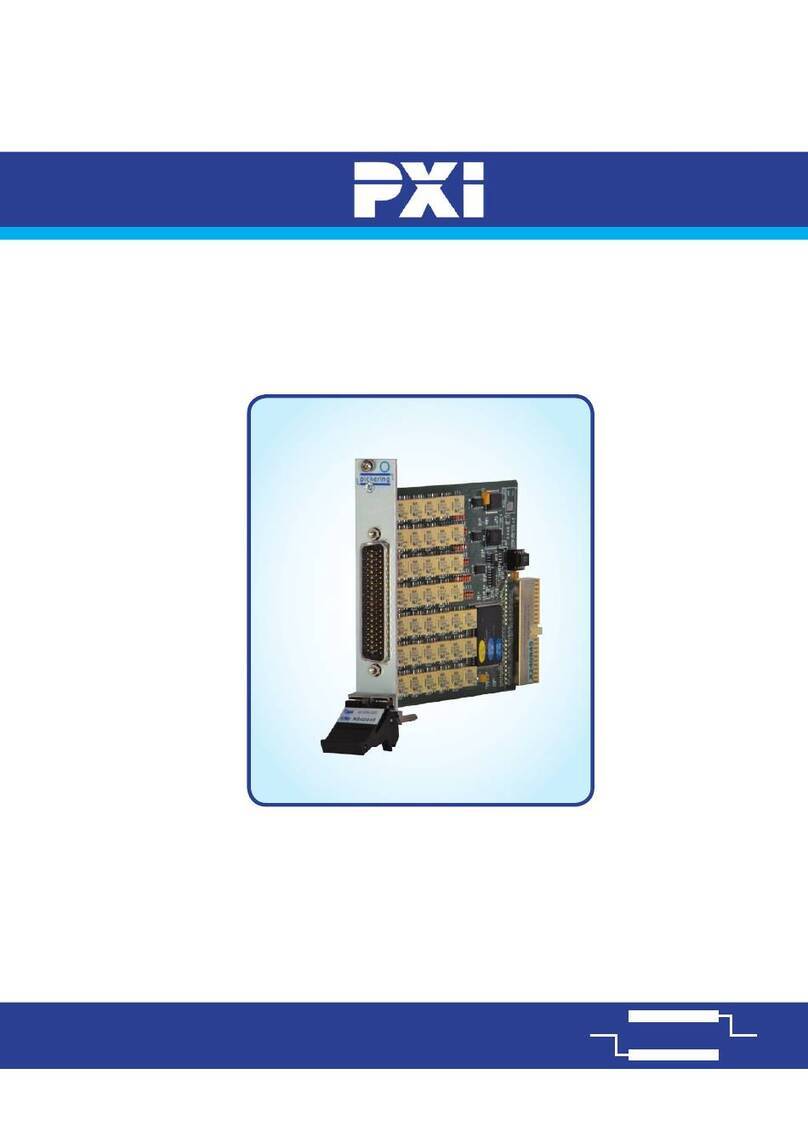
Pickering
Pickering 40-656A user manual
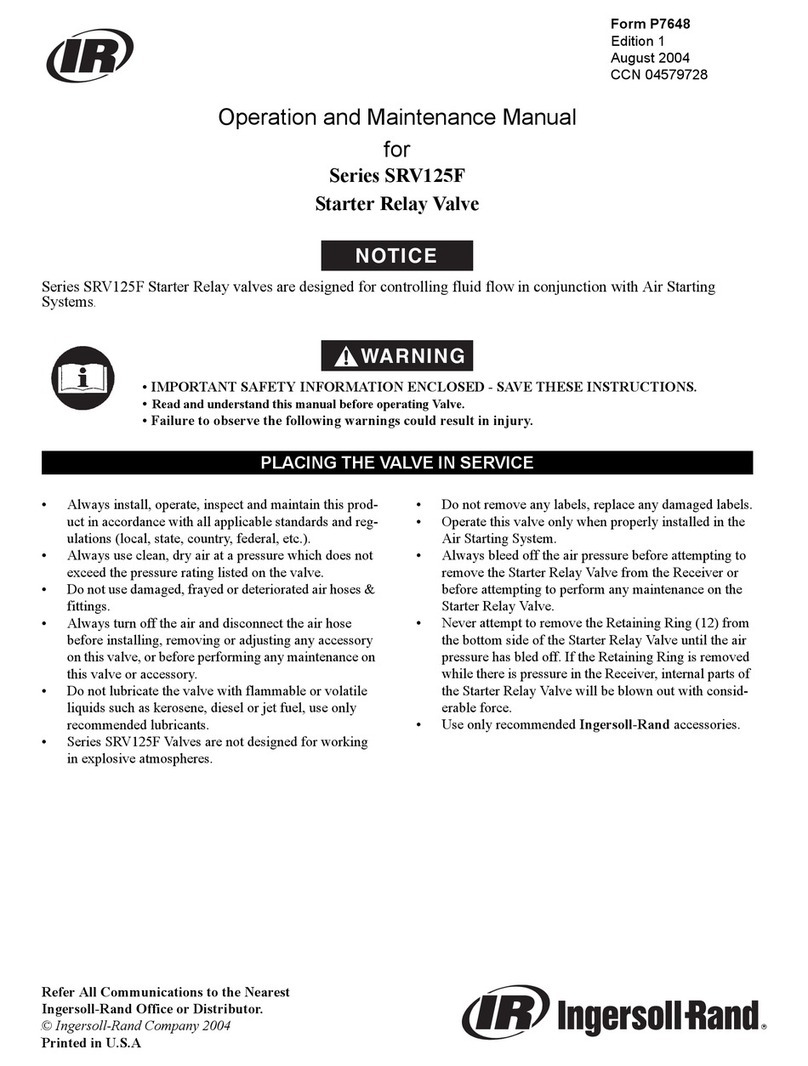
Ingersoll-Rand
Ingersoll-Rand SRV125F Series Operation and maintenance manual
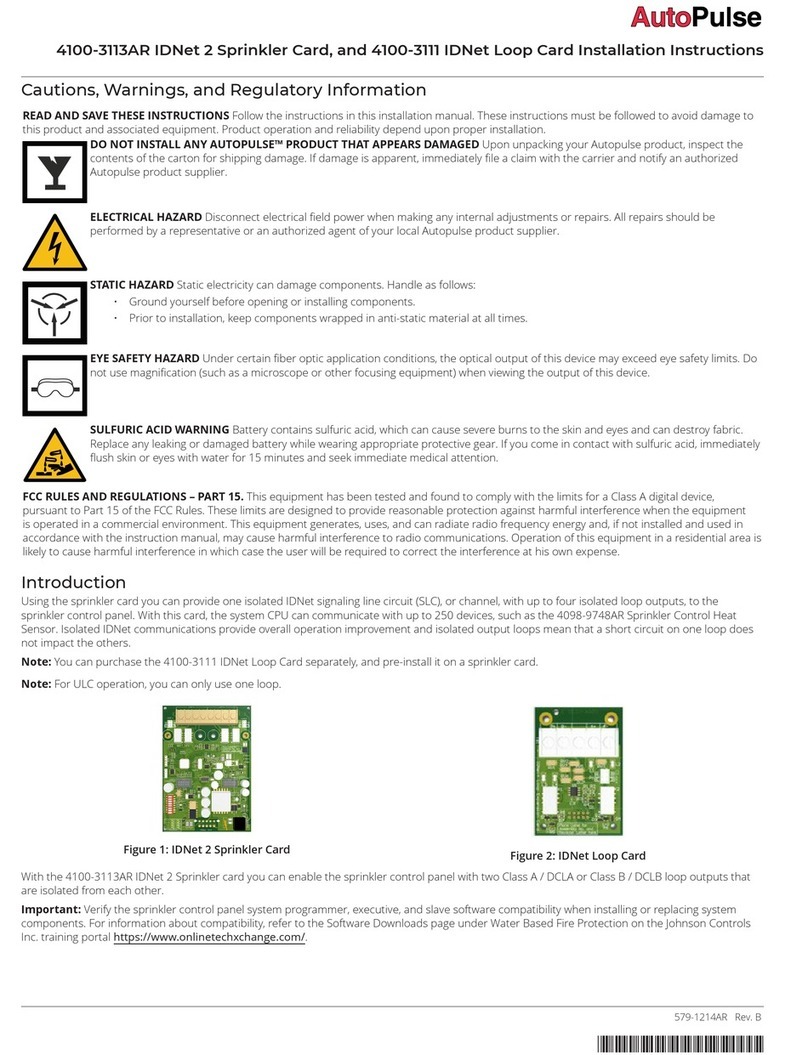
AutoPulse
AutoPulse 4100-3113AR installation instructions
